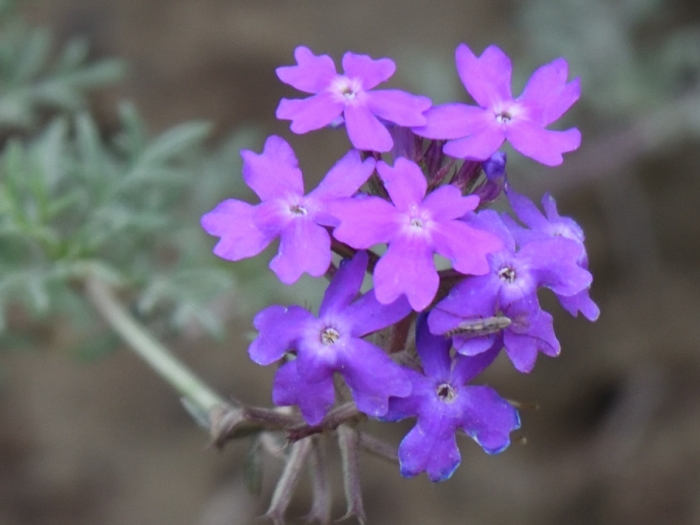Desert Verbena
(Glandularia aristigera)
Desert Verbena (Glandularia aristigera)
/
/

Andrew Gillespie
CC BY-SA 4.0


















































Estimated Native Range
Summary
Desert Verbena is valued for its long blooming season and its ability to thrive in hot, dry climates, making it an excellent choice for water-wise gardens, rock gardens, and borders. It is also used for naturalizing in wildflower meadows where its vibrant flowers add color and attract wildlife. This plant prefers full sun to part shade and can tolerate a range of soil types, provided they have good drainage. While it is drought-tolerant once established, regular watering during the flowering period can promote a more robust display. Desert Verbena can spread readily by self-seeding, which is a trait to consider when planting. In some regions, it may become invasive, so it is important to monitor its growth and manage its spread to prevent unwanted naturalization.CC BY-SA 4.0
Plant Description
- Plant Type: Herb
- Height: 0.5-1.5 feet
- Width: 2-3 feet
- Growth Rate: Moderate
- Flower Color: Pink, Purple
- Flowering Season: Spring, Summer, Fall
- Leaf Retention: Evergreen
Growth Requirements
- Sun: Full Sun, Part Shade
- Water: Low, Medium
- Drainage: Medium
Common Uses
Bank Stabilization, Bee Garden, Bird Garden, Butterfly Garden, Drought Tolerant, Low Maintenance, Potted Plant, Rock Garden, Showy Flowers
Natural Habitat
Native to open woodlands, plains, and grasslands in Southern Brazil, Paraguay, Uruguay, and Northern Argentina
Other Names
Common Names: Fine Leafed Verbena, Mayne’s Curse, Mayne’s Pest, Moss Verbena, South American Mock Vervain, Tuber Vervain, Verbena, Wild Verbena, Moss Vervain
Scientific Names: , Verbena tenuisecta, Glandularia aristigera, Verbena aristigera, Glandularia tenuisecta, Glandularia cochabambensis, Verbena tenuisecta var. alba, Verbena cochabambensis, Verbena tenuisecta f. rubella,
GBIF Accepted Name: Glandularia aristigera (S.Moore) Tronc.